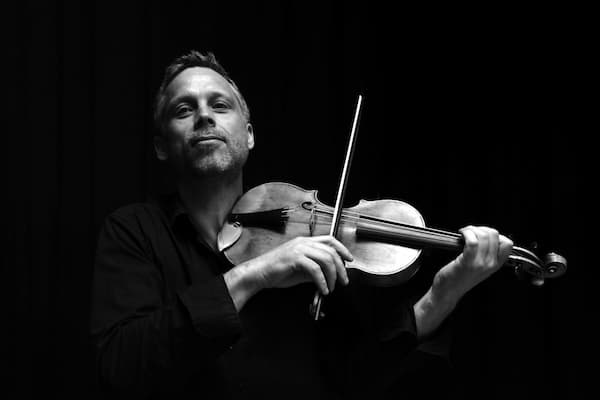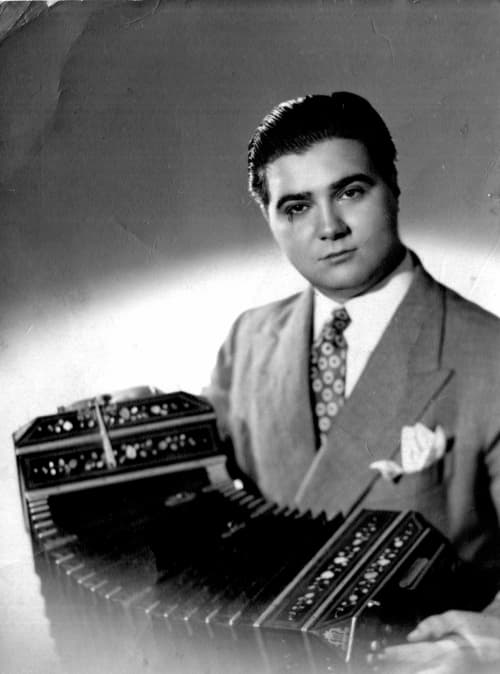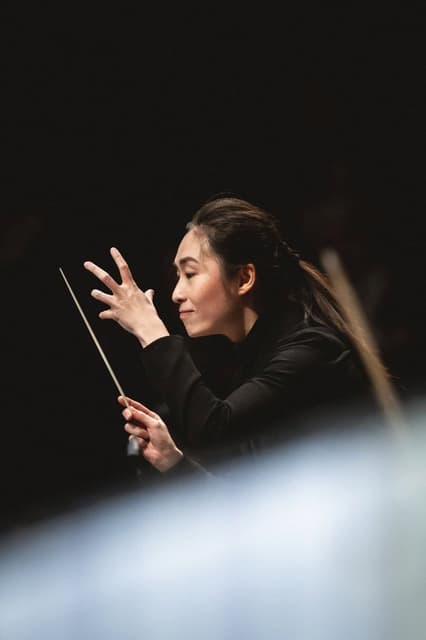
Jérémie Rhorer © Caroline Doutre
In talking with Jérémie Rhorer of Le Cercle de l’Harmonie, an ensemble founded in 2005 to explore the line between Classical and Romantic music, we discovered a new Brahms. Le Cercle de l’Harmonie is an orchestra that plays period instruments, and so they are well equipped to strip away the accretions on Classical and Romantic music and return to the sources to play what was written.
Most Classical music we hear today comes with a large body of lore surrounding it – orchestras don’t necessarily play what’s on the page but rather what they have been taught that’s on the page. Interpretations by influential conductors can add invisible elements to the music that affect the audio realization. For example, what exactly did Mahler do when he reorchestrated music of earlier times – are Mahler’s versions of Schumann’s symphonies what Schumann had in mind or does it reflect Mahler’s desire for a bigger sound? Rhorer feels that we’ve lost the internal details in the search for a larger sound.
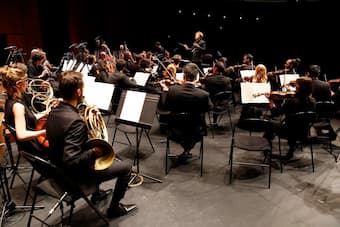
Le cercle de l’harmonie © Caroline Doutre
Rhorer views Brahms as the exceptional Romantic composer. Brahms’ deep background in the music of Palestrina, in the French harpsichord tradition, and in Bach gives his music a depth that isn’t found in either Mozart or Beethoven. We know that Mozart took up Bach late in his career and we can hear his counterpoint lessons come out in works such as Die Zauberflöte, but for Brahms, this music wasn’t a late discovery but an intrinsic part of his compositional toolset.
Le Cercle de l’Harmonie just issued a recording of two seminal works by Brahms that tests Rhorer’s period instrument hypothesis: Symphony No. 1 and the Violin Concerto. For Brahms, these works were difficult in gestation. Often the delay in the creation of his Symphony No. 1 is blamed on his problem in writing symphonies following Beethoven. Rhorer points out that perhaps we’re being a bit too linear in our thinking. Schumann didn’t have problems writing symphonies after Beethoven – why does Beethoven have to be the sticking point for Brahms? If we regard Brahms’ Symphony No. 1 as the beginning of Brahms and not the end of Beethoven, then we can start to hear the music in both a different way and in a new way. Brahms’ first movement has the rhythmic power of Beethoven but also has a melodic line that Beethoven could never approach.
Johannes Brahms: Symphony No. 1 – I. Un poco sostenuto – Allegro (Le cercle de l’harmonie; Jérémie Rhorer, cond.)
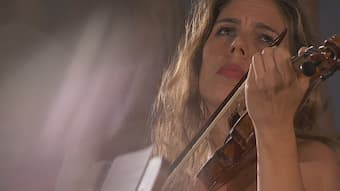
Stéphanie-Marie Degand © CLC Productions / Tangaro
Brahms’ youthful background in popular music, famously playing in the restaurants in town, brings a melodic aspect to his music that is unique. If we regard his Symphony No. 1 from the point of view of dramaturgy, then we have a work that is more complex than we might have thought. What comes out most clearly here are the tone colours of the instruments – the brass isn’t overpowering, the woodwinds have their own voice, and the strings are controlled.
Brahms has a certain elegance that in the hands of the period players causes us to re-hear what might be far too familiar. What if we unlinked Brahms from Beethoven and linked him instead to Debussy or Ravel? If we trace a line from Bach through Mozart to Brahms and then onward to the French composers, we might find a more interesting way of appreciating Brahms’ qualities.
The Violin Concerto, here with Stéphanie-Marie Degand as soloist, brings its own rewards in the hands of this period orchestra. The violin takes on a guise that seems to dance around the orchestra – and the orchestra attempts to capture this being of light and sound with the result that everything is much lighter in quality than we’re used to.
Johannes Brahms: Violin Concerto in D major – III. Allegro giocoso, ma non troppo vivace (Stephanie-Marie Degand, violin; Le cercle de l’harmonie; Jérémie Rhorer, cond.)
When we think of music on period instruments, we generally stop around Mozart. Carrying it further into the 19th century permits us to rethink what we’ve heard and enables us to actually hear the musicality of a composer who has become overburdened with the accretions of time and habit.
We always welcome music that makes us re-hear the familiar. Experience the ideas of Jérémie Rhorer and Le Cercle de l’Harmonie and hear a new Brahms with them.
For more of the best in classical music, sign up to our E-Newsletter

